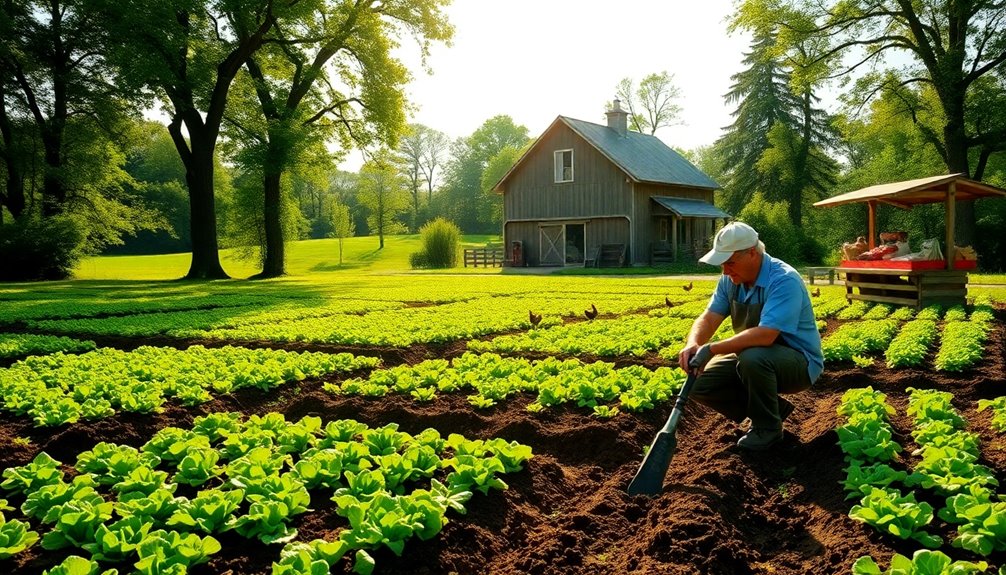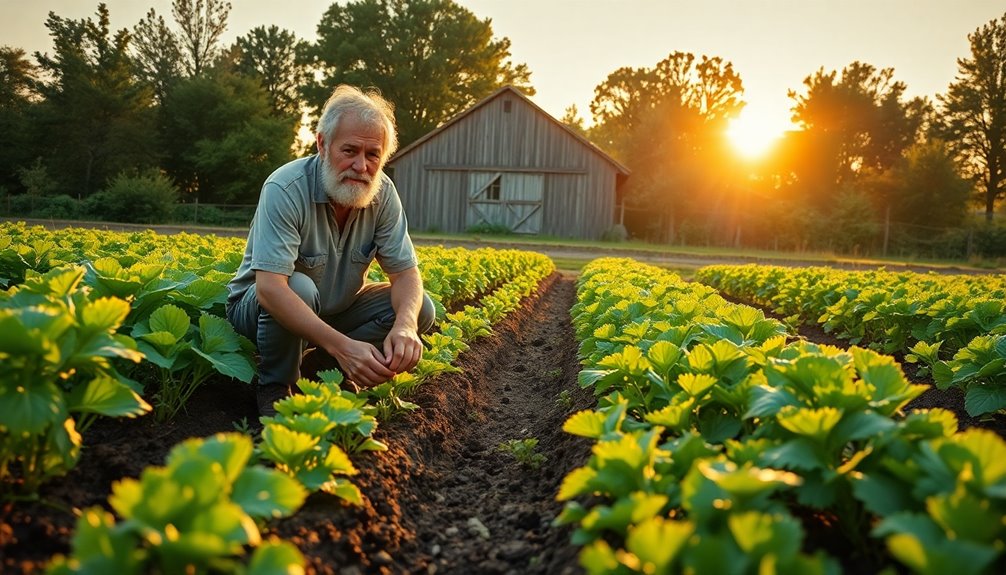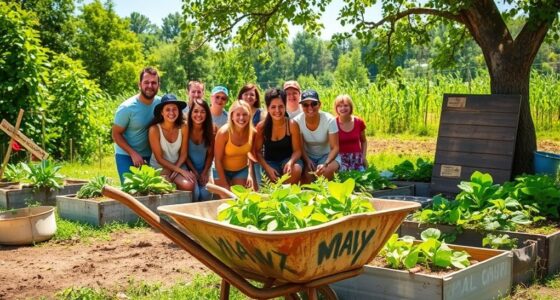Subsistence farming focuses on growing food mainly for your family's needs instead of for sale. You typically work small plots of land, using traditional techniques and family labor. This approach not only meets your nutritional requirements but also promotes self-sufficiency and lowers reliance on volatile markets. Although subsistence farming plays a significant role in food security, it's vulnerable to harsh weather and economic pressures. With the right knowledge and practices, you can enhance your resilience and sustainability. Uncovering these insights can lead you to discover even more about thriving in a self-sufficient lifestyle.
Key Takeaways
- Subsistence farming focuses on producing food primarily for family consumption, ensuring basic nutritional needs are met.
- It involves traditional farming methods and small land parcels, often reliant on family labor for cultivation.
- This agricultural practice promotes self-sufficiency, reducing dependency on volatile market systems and enhancing local food security.
- Subsistence farming preserves cultural heritage and fosters community resilience through diverse crop production and sustainable practices.
- Modern challenges, such as climate change and urbanization, threaten subsistence farming, highlighting the need for support and innovative solutions.
Definition of Subsistence Farming
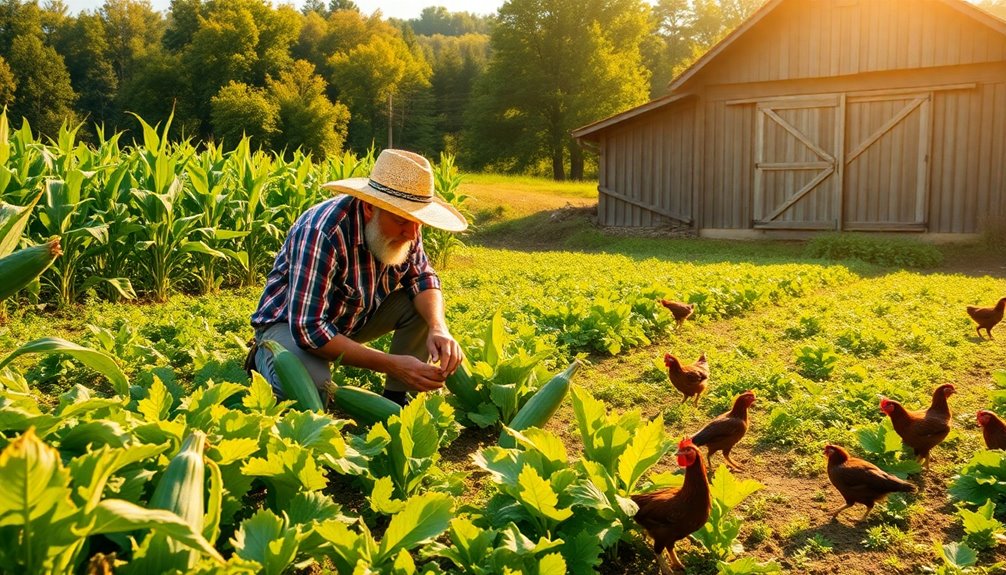
Subsistence farming is a practice where farmers grow food mainly to feed their families, leaving little or no surplus for sale.
You'll find that this type of agriculture typically involves small land parcels, often just a few acres, and relies heavily on traditional farming methods. Instead of using modern technology, farmers depend on their family's labor and skills, cultivating diverse crops that meet their nutritional needs and adapt to local conditions.
This approach not only sustains the family but also plays a crucial role in food security, particularly in rural areas of sub-Saharan Africa, Asia, and Latin America.
Key Characteristics
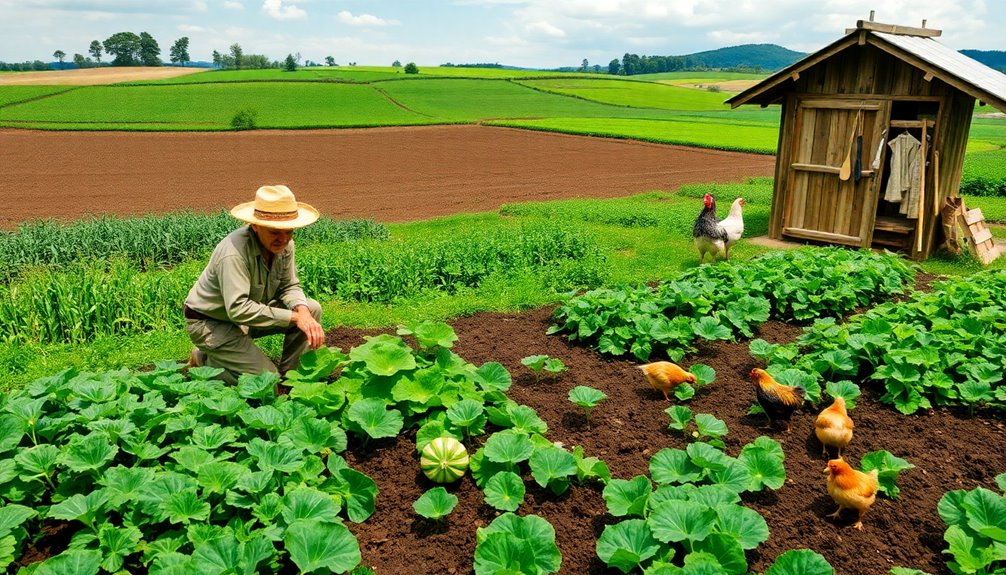
Focusing on small land areas, key characteristics of subsistence farming highlight its intimate connection to family and community needs.
Typically, subsistence farmers cultivate just a few acres, primarily to provide food for their families rather than for sale. Most of the labor comes from family members, showcasing a strong reliance on family labor.
They often use traditional farming methods, which can lead to lower yields due to limited access to modern technologies. By growing a diverse range of crops, these farmers guarantee a varied diet, reducing their dependency on external food sources.
However, they face challenges such as vulnerability to harsh weather conditions and resource limitations, which can threaten their food security and overall livelihoods.
Historical Context
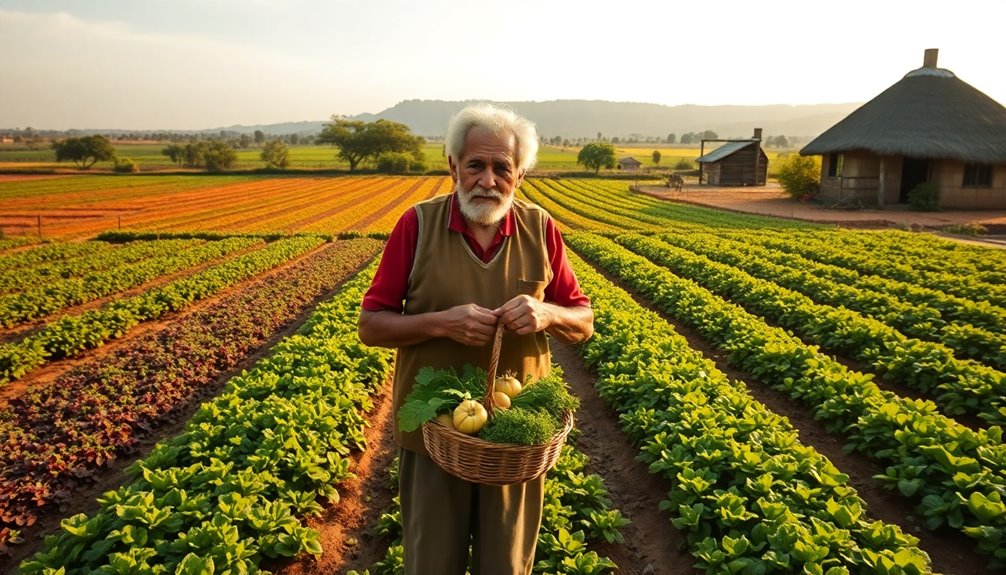
Agricultural practices have evolved considerably over the millennia, with subsistence farming being one of the earliest forms. In its historical context, subsistence farming allowed families to grow food for their survival before urbanization shifted focus toward commercial agriculture. Farmers often migrated in search of fertile land, leading to a transient lifestyle.
| Period | Key Characteristics | Significance of Subsistence |
|---|---|---|
| Early Societies | Local food production for families | Foundation of food security |
| Pre-Urbanization | Transient farming based on soil health | Adaptation to environmental changes |
| Modern Times | Persistence in various regions | Cultural heritage and local resilience |
Subsistence farming remains significant, especially in regions like sub-Saharan Africa, where food security is crucial for rural livelihoods.
Global Distribution
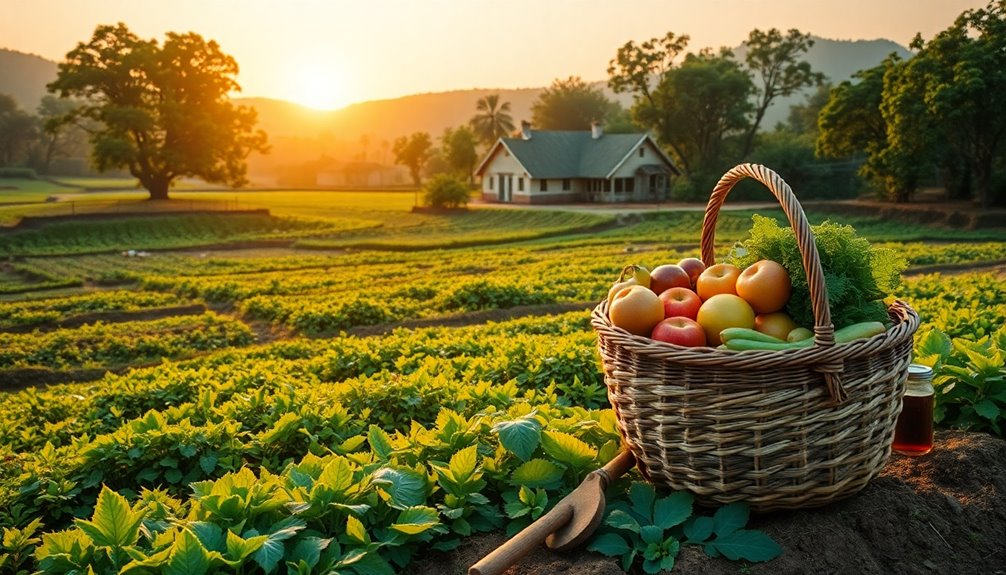
When you look at the global distribution of subsistence farming, you'll notice it thrives in regions like sub-Saharan Africa, Southeast Asia, and parts of Latin America.
Local climates and cultural practices play a huge role in shaping farming methods and outputs. Understanding these factors is essential, as they highlight the economic significance of subsistence farming for many rural communities.
Regional Farming Practices
Practicing subsistence farming varies considerably across the globe, shaped by local climates and cultural traditions.
In sub-Saharan Africa, many rural families rely on subsistence farms as their primary means of food production.
In parts of Asia, particularly India and Bangladesh, farmers cultivate diverse crops to meet nutritional needs despite limited access to resources.
Meanwhile, Latin America showcases significant subsistence farming, especially in rural areas where traditional methods persist amid urbanization pressures.
The global distribution of these practices reflects unique farming methods tailored to specific environments.
Regions with limited access to markets and modern agricultural technologies tend to rely more heavily on subsistence farming for food security and community sustainability, ensuring their families can thrive.
Climate Influence on Agriculture
Climate plays an essential role in shaping agricultural practices around the world, directly affecting what crops can thrive and how productive farms can be. The climate influence on agriculture is particularly evident in subsistence farming, where local conditions dictate crop choices and yield.
Here are some key factors to take into account:
- Rainfall Patterns: Erratic rainfall in regions like sub-Saharan Africa can lead to food production challenges.
- Soil Fertility: Favorable climates, such as in Southeast Asia, often result in more fertile soils and higher productivity.
- Temperature Variability: Different temperature ranges impact crop selection and farming techniques globally.
- Climate Change: Shifting weather patterns increase vulnerability to natural disasters, threatening food security.
Understanding these aspects helps you appreciate the delicate balance between climate and agriculture.
Economic Significance of Subsistence
Subsistence farming's economic significance stretches across various regions, especially in sub-Saharan Africa, where about 70% of the population depends on it for daily sustenance. This form of agriculture thrives despite limited access to modern technologies, leading to lower yields and increased food insecurity. In Asia and Latin America, rural communities also rely on small-scale farming for food security and cultural preservation. Though the cash flow is minimal, with most produce consumed by the farming families, these practices maintain local economies and provide resilience against market fluctuations.
| Region | Economic Role |
|---|---|
| Sub-Saharan Africa | Daily sustenance for 70% |
| Asia | Food security and culture |
| Latin America | Small-scale farming reliance |
| Global | Limited use in local markets |
| Rural Communities | essential for local economies |
Economic Impact

When you look at subsistence farming, you'll notice that limited cash flow greatly restricts economic opportunities for farmers.
They often rely on barter systems instead of cash, which can leave them vulnerable to market fluctuations.
This reliance not only affects their daily lives but also limits their ability to adapt to changing economic conditions.
Limited Cash Flow
Often, subsistence farming results in limited cash flow, as farmers primarily focus on producing food for their families rather than generating income through sales. This approach leads to financial instability, putting farmers at risk during poor harvests or unexpected expenses.
Here are some key factors contributing to this situation:
- Minimal cash generation restricts access to essential goods and services.
- Reliance on local resources limits market integration and income opportunities.
- Lack of surplus production makes farmers vulnerable to food availability fluctuations.
- Limited access to modern agricultural technologies hinders productivity and growth.
As urbanization and industrial agriculture expand, subsistence farmers face increasing challenges, further deepening their reliance on self-sustaining practices and reinforcing their limited cash flow.
Barter System Reliance
In many rural communities, the barter system serves as a lifeline for subsistence farmers, enabling them to trade goods and services without relying on cash. This barter system reliance strengthens local economies, as farmers exchange food and resources directly. With limited access to cash, these transactions become essential for survival.
| Goods Traded | Services Exchanged |
|---|---|
| Vegetables | Animal care |
| Grains | Tool repairs |
| Livestock | Labor assistance |
| Fruit | Home maintenance |
| Crafts | Knowledge sharing |
Vulnerability to Market Fluctuations
Subsistence farmers, while relying on barter systems for daily needs, still face significant economic vulnerabilities tied to market fluctuations.
With minimal surplus production, they often can't capitalize on market changes, leaving them exposed to economic instability. Their limited access to cash flow and modern agricultural technologies makes it tough to adapt when prices fluctuate or supply chains are disrupted.
Here are some key points to evaluate:
- Dependence on Local Markets: Limited exposure to larger markets increases vulnerability.
- Minimal Surplus Production: Without extra crops, there's no buffer against price drops.
- Economic Instability: Fluctuating prices threaten their already fragile economic situation.
- Urbanization Pressure: Encroachment from industrial agriculture complicates traditional practices.
These factors combine to heighten the vulnerability to market fluctuations for subsistence farmers.
Importance of Subsistence Farming
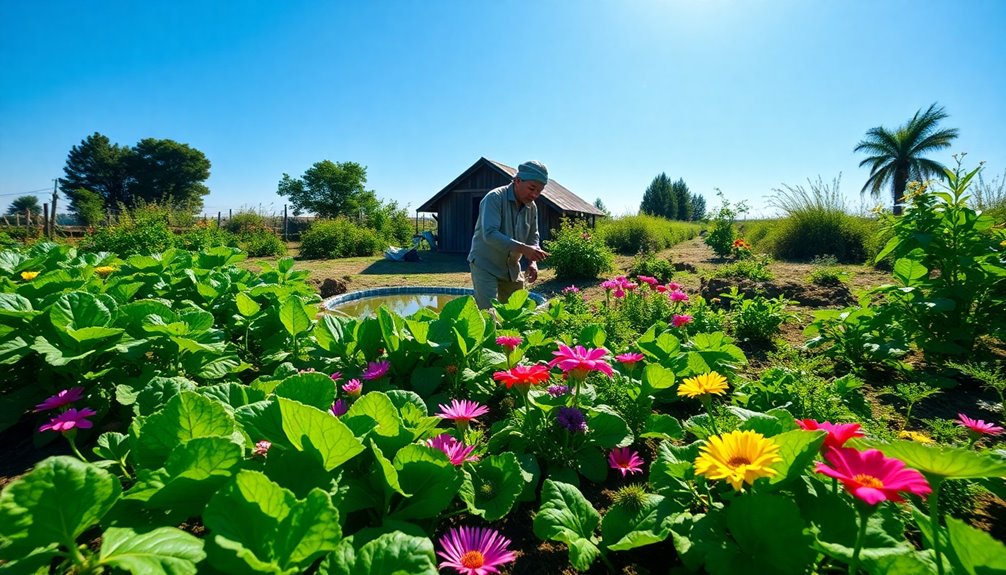
Farming at a subsistence level is essential for food security, especially for millions of households in regions like sub-Saharan Africa. By focusing on self-sufficiency, you help meet your nutritional needs while reducing reliance on unstable market prices.
This practice not only buffers against economic uncertainties but also preserves cultural heritage, as traditional farming methods and crop varieties are passed down through generations.
Additionally, subsistence farming promotes environmental sustainability by cultivating diverse crops that enhance biodiversity. It strengthens local economies through barter systems, fostering resilience and social cohesion among community members.
Ultimately, your commitment to subsistence farming nurtures both your family and the community, ensuring a sustainable future for everyone involved.
Challenges Faced by Farmers

Facing numerous challenges, farmers often struggle to maintain their livelihoods in the subsistence sector. These challenges can dramatically impact their ability to produce enough food for their families and communities.
Here are some key issues you may encounter:
- Adverse weather conditions that threaten crop yields and food availability.
- Limited access to modern seeds and tools, reducing productivity and efficiency.
- Economic pressures from market fluctuations and the global shift towards commercial farming, making it hard to compete.
- Urbanization that converts farmland for residential and industrial use, leading to a decline in farming activity.
These challenges faced by farmers can create a cycle of vulnerability, making self-sustainability increasingly difficult amidst changing environmental and economic landscapes.
Relevance in Modern Context
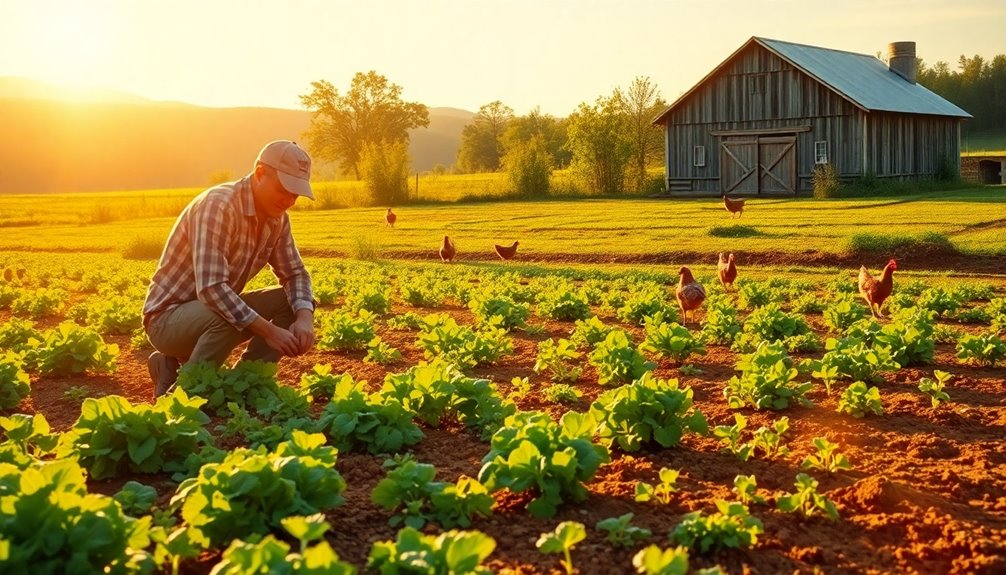
Amid the challenges that subsistence farmers encounter, the relevance of their practices in today's world becomes increasingly apparent.
As global supply chain disruptions affect food availability, self-sufficiency through subsistence farming allows families to produce their own food and even generate a surplus for sale.
These farming practices emphasize environmental sustainability, which is essential as society seeks eco-friendly food production methods to combat climate change.
Additionally, subsistence farming helps preserve cultural heritage, passing down traditional knowledge that fosters community identity.
In our rapidly urbanizing world, these practices remind us of the importance of local food systems and their resilience against economic fluctuations, making them more relevant than ever in shaping modern agricultural approaches.
Future Outlook
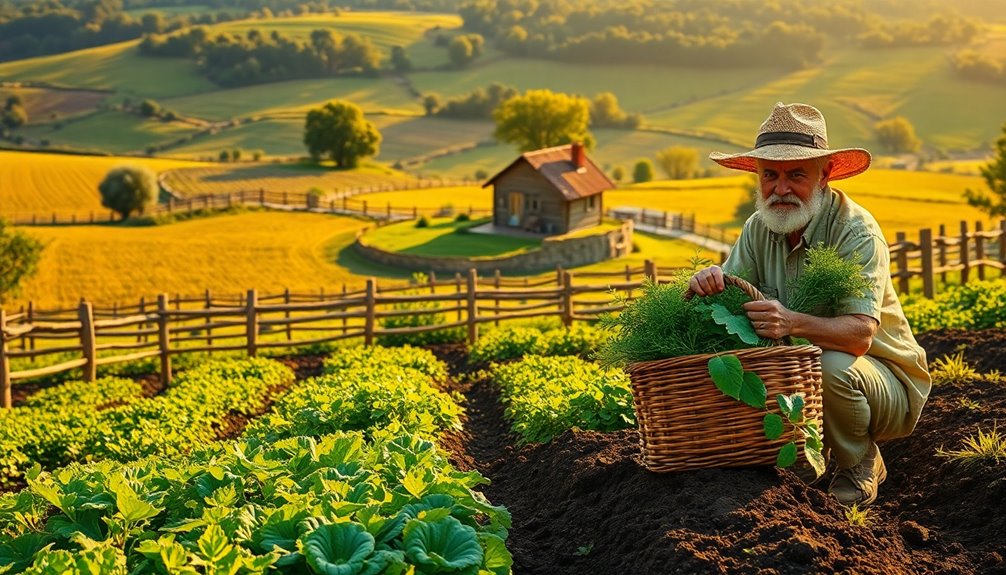
The future of subsistence farming hinges on several critical factors that could either bolster or undermine its viability.
Climate change poses significant risks, but there's hope through sustainable practices. To enhance your future outlook, consider these key elements:
- Sustainable Practices: Embrace technologies that boost productivity and resilience.
- Policy Support: Advocate for local resource investment to uplift subsistence farmers.
- Cultural Heritage: Protect traditional methods that promote biodiversity and ecosystem health.
- Urbanization Initiatives: Support efforts that safeguard rural farming against urban encroachment.
Additionally, integrating solar-powered irrigation systems can improve water efficiency and crop yields, contributing to the sustainability of subsistence farming practices.
Frequently Asked Questions
What Is Subsistence Farming?
Subsistence farming is all about growing food primarily for your family's needs, with little left over for selling.
You might work a small piece of land, relying on traditional farming methods and family labor. This way of farming is common in rural areas around the world, where it helps guarantee food security and preserves local cultures.
However, you'll face challenges like climate change and limited access to modern agricultural tools.
Is Subsistence Farming Sustainable?
You might find that subsistence farming can be sustainable in many ways.
By relying on traditional practices like crop rotation and polyculture, you help maintain soil fertility and biodiversity. Plus, it often uses fewer chemicals, leading to a lower carbon footprint.
However, challenges like climate change and urbanization can threaten this sustainability.
To guarantee a resilient future, you'll need to adapt and protect these essential agricultural practices against external pressures.
What Is Self Subsistence Farming?
When it comes to self-subsistence farming, you're talking about a way of life where you grow just enough food to feed your family, leaving little for sale.
It's like keeping your eggs in one basket, relying on your own land and traditional methods. You'll cultivate a variety of crops to guarantee everyone's nutritional needs are met.
This approach not only fosters independence but also helps you stay connected to your cultural heritage and the land.
What Is the Definition of Subsistence Farming in AP Human Geography?
In AP Human Geography, subsistence farming is defined as a type of agriculture where you grow just enough food to meet your family's needs, usually with little left over for sale.
You typically work small plots of land, relying on traditional methods and family labor. This practice helps guarantee local food security and often reflects cultural traditions while promoting environmental sustainability through diverse crop cultivation.
It's a crucial part of many rural communities around the world.
Conclusion
To sum up, subsistence farming plays an essential role in sustaining communities worldwide. Did you know that nearly 2 billion people rely on subsistence farming for their daily needs? As you've discovered, this age-old practice not only supports food security but also fosters self-sufficiency. While challenges persist, the resilience of subsistence farmers highlights the importance of their work in a rapidly changing world. Embracing their methods could inspire a more sustainable future for all of us.

